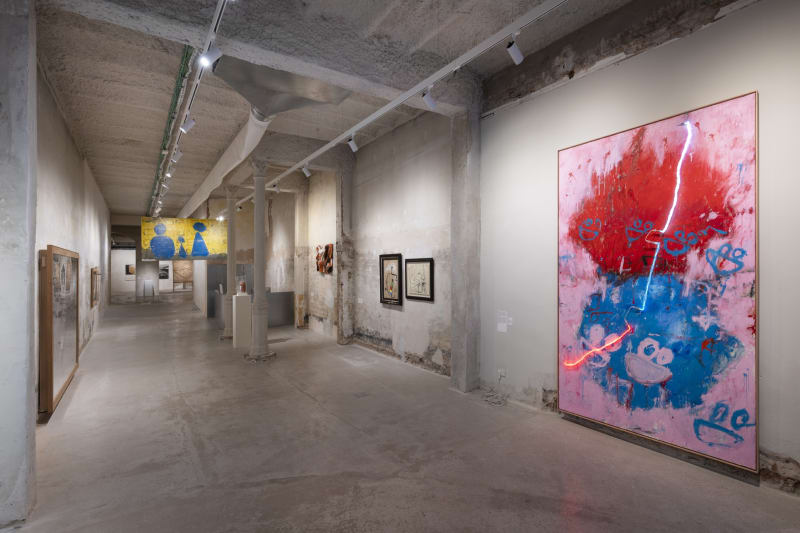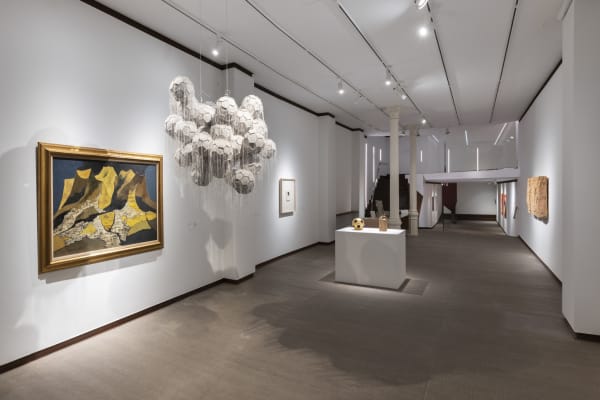RADICALLY UNIQUE, RADICALLY DIFFERENT: Barcelona
Galeria Mayoral is celebrating 35 years with an exhibition curated by Carles Guerra where the brilliant artists from the most iconic avant-garde share a space with those of the postwar period and those from younger generations. Seen together, they are radically unique, radically different.
If we champion difference rather than homogeneity, the 20th century appears to be a sequence of irreconcilable personalities. So unique that nothing links them. We could say that the systematic production of difference produced a heroic history of art. On the contrary, if we highlight the similarities, the ties and the relations between them, we see a calculated
progress that suggests an endless line. So far this model does not apply to the 21st century either. Catastrophes, rather than difference or homogeneity, dictate the order of a creativity of the masses characteristic of the world of art. Individual creativity is beginning to be seen as the remains of a system that has left us with lists of artists, but which has ignored the effect of all this. The logic of imitation, as supported by the French sociologist Gabriel Tarde, still has to prove to us that it is stronger than an abstract notion of invention.
We include works by Pablo Picasso, Joan Miró, Salvador Dalí, Oswaldo Guayasamín, Antoni Tàpies, Eduardo
Chillida, Juana Francés, Fernando Zóbel, Aurèlia Muñoz, Antonio Saura, Magda Bolumar, Eulàlia Grau, José Pérez Ocaña, Marga Ximenez, Miquel Barceló, Martina Pla, Jordi Alcaraz, Francisco Taka Fernández, Darío Escobar, José Carlos Martinat, Albert Serra, Marria Pratts and Maxwell Alexandre. The 23 artists are all part of the same school, that which Salvador Dalí and René Crevel improvised in premises of the Workers and Peasants’ Bloc in 1931 in
Barcelona. Shortly afterwards, in 1933, Dalí recognized the loyalty of his friend Crevel in Vanitas, an artwork we show in this exhibition. In the dedication we can clearly read “A René Crevel très amicallement [amicalement]”. This “amicallement” evoked a turbulent history of friendship and militancy. A moment of the greatest intensity. If we were to stage an exhibition under the sign of this “amicallement”, it would be like making complicity a banner despite its transitory nature. Ideas and forces that last as long as they last.
This is not, however, only possible between figures touched by the romanticism of the avant-garde. There is also the example of Albert Serra, a very contemporary filmmaker. After premiering the film The Death of Louis XIV at the 2016 Cannes Film Festival, he produced a piece entitled Roi Soleil. With the film completed, Albert Serra conceived a performance which recorded the original idea of the whole project. The images show the monarch abandoned in the middle of a stripped gallery with the public gradually arriving. The filming, bathed in red light, recalls Andy Warhol’s film documentaries where he portrayed the Factory atmosphere at times of collective delirium. That circle, where any gesture came to be part of a wretchedly productive factory, but where it was impossible to know what catalyzed all the surplus value.
This doubt, not knowing where invention, productivity and the mechanisms of intellectual progress lie, deprives us of any criterion to attempt to put in order what at first sight seems to be too heterogeneous, too diverse. But, after careful consideration, maybe it isn’t. Perhaps homogeneity nestles where there appear to be insurmountable differences. An equation that fits in well with a world that suggests a maximum of local freedom under a form of globalized control. Paradoxes with which we have to live.























